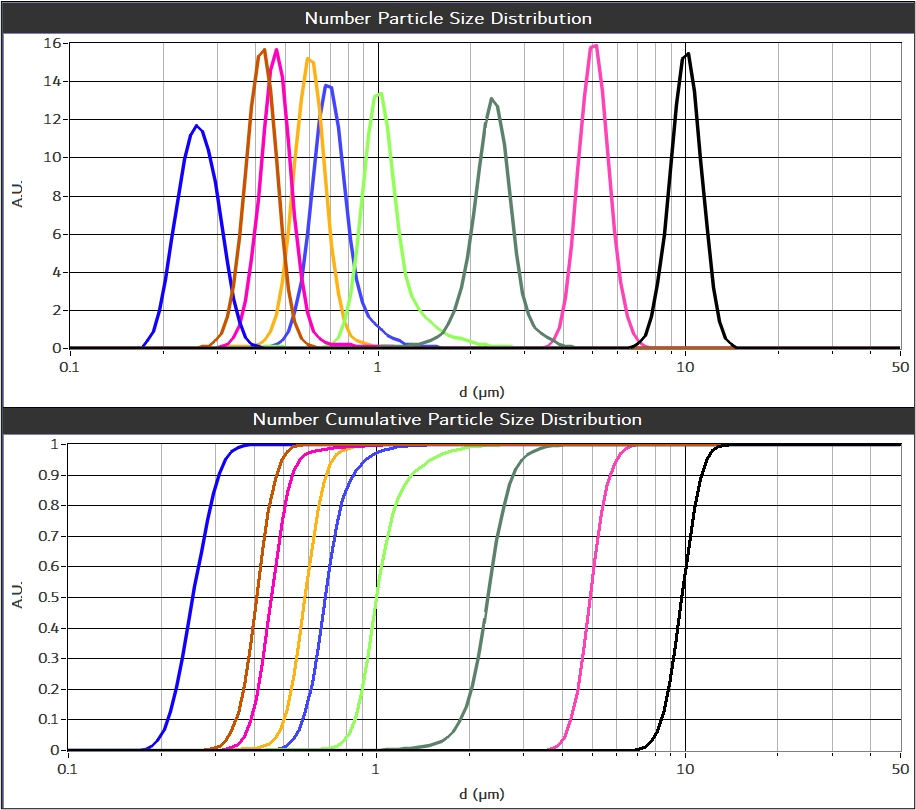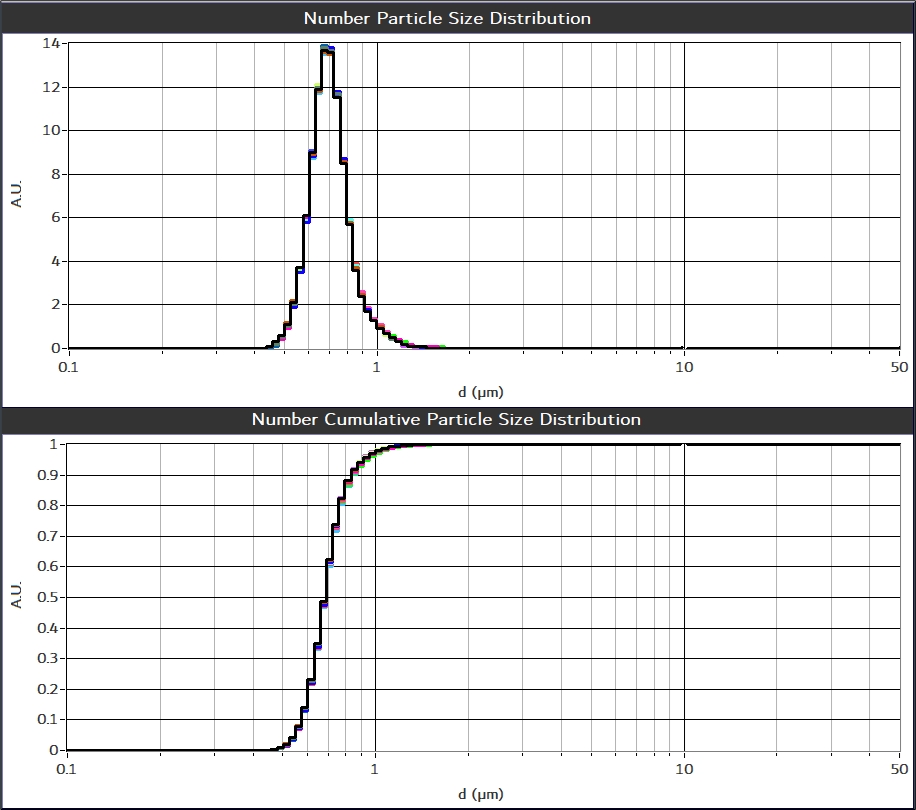SPES (Single Particle Extinction and Scattering) patented technology takes advantage of a novel single particle measuring approach. It is possible to discriminate particles on the basis of their effective refractive index. Thus, a precise and quantitative analysis of numerical particle size distributions of single populations is possible, moreover avoiding artefacts due to invention algorithms, as required in traditional particle sizing methods, such as Dynamic Light Scattering (DLS), Static Light Scattering (SLS) and MultiAngle Light Scattering (MALS). High accuracy and resolution on the numerical particle size distribution are possible also for heterogeneous samples in biological fluids, where the presence of solid content complicates, if not prevents, any characterization measurement with traditional approaches.
(in figure) Experimental Numerical Particle Size Distributions and Cumulant Distributions of a mix of polystyrene standard samples of 0.24µm, 0.46µm, 0.5µm, 0.6µm, 0.7µm, 1µm, 2.0µm, 5µm and 10µm diameters dispersed in filtered water.

Reproducibility is another aspect of capital importance for analytical methods, especially for batch-2-batch QC applications. SPES measurements of analytical replicates of standard particles are useful for the quantification and the validation of the reproducibility within the sample preparation error.
(in figure) SPES reproducibility test. Sixteen analytical replicates of PS calibrate spheres of 0.7µm, diluted 20000 times in milliQ-grade water at 5E6 ptc/mL from an initial bulk concentration of 1E11 ptc/mL. (top) Particle Size Distribution, (down) Cumulant Particle Size Distributions.


